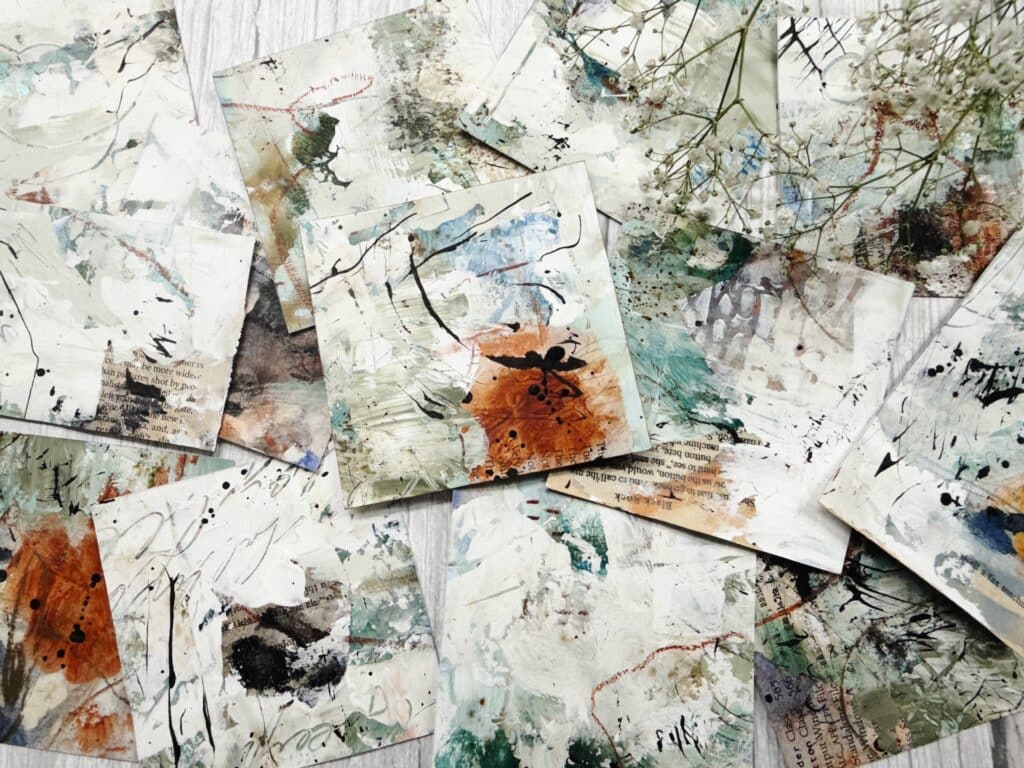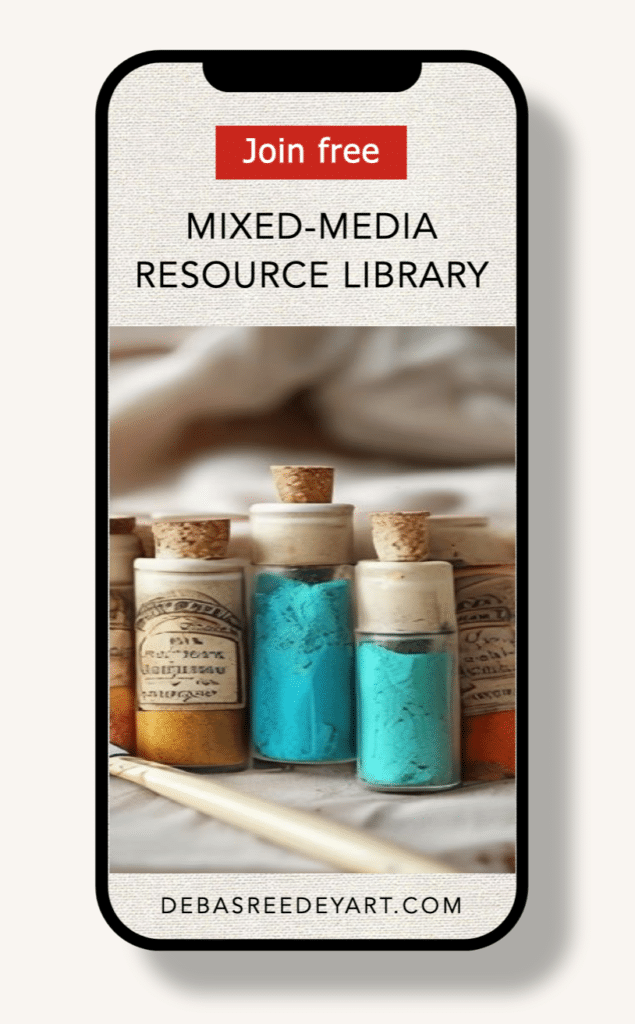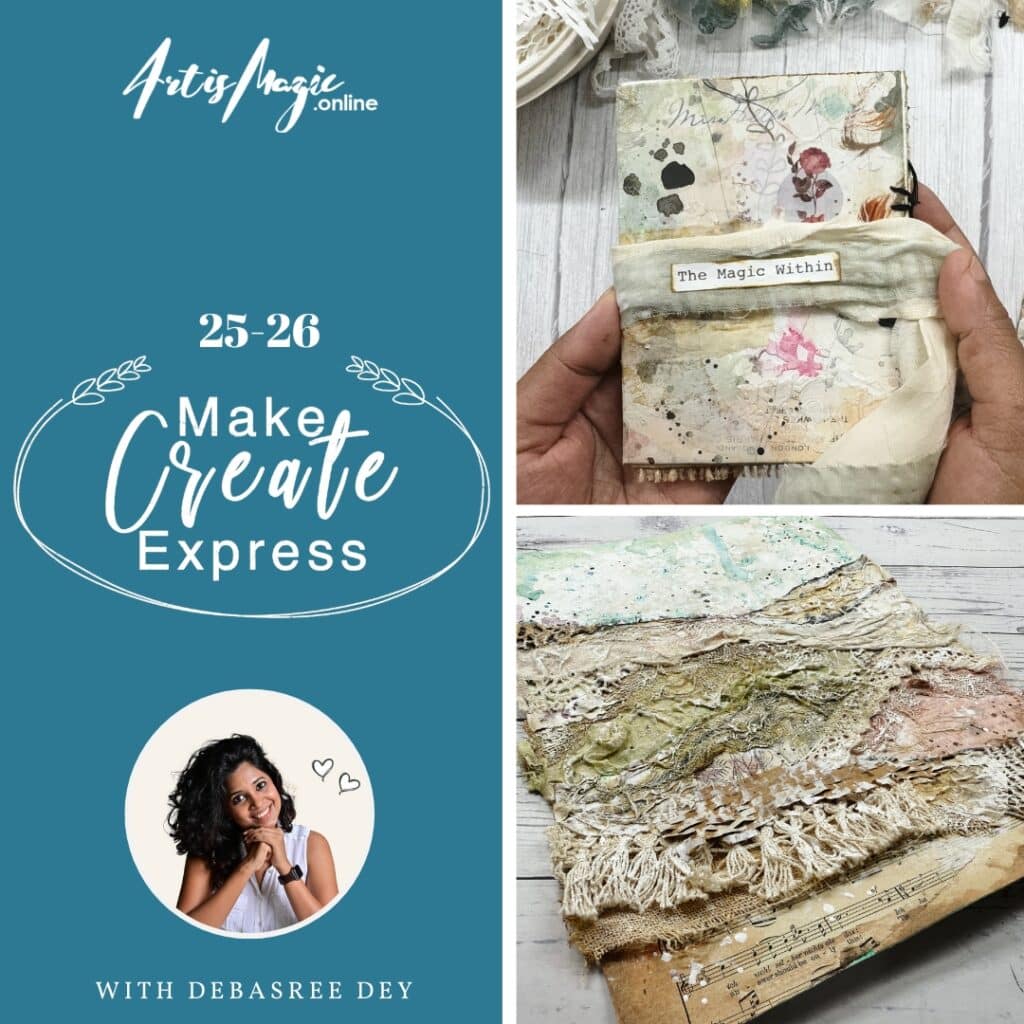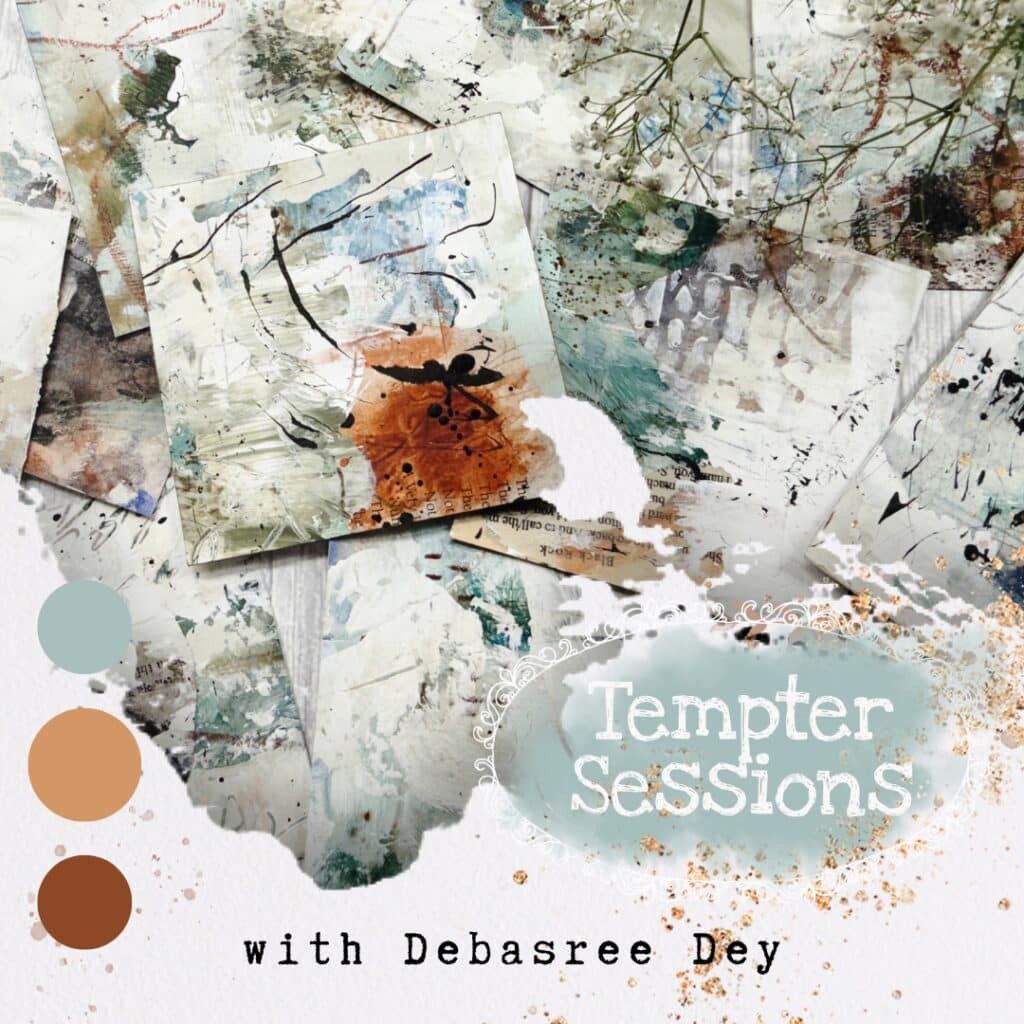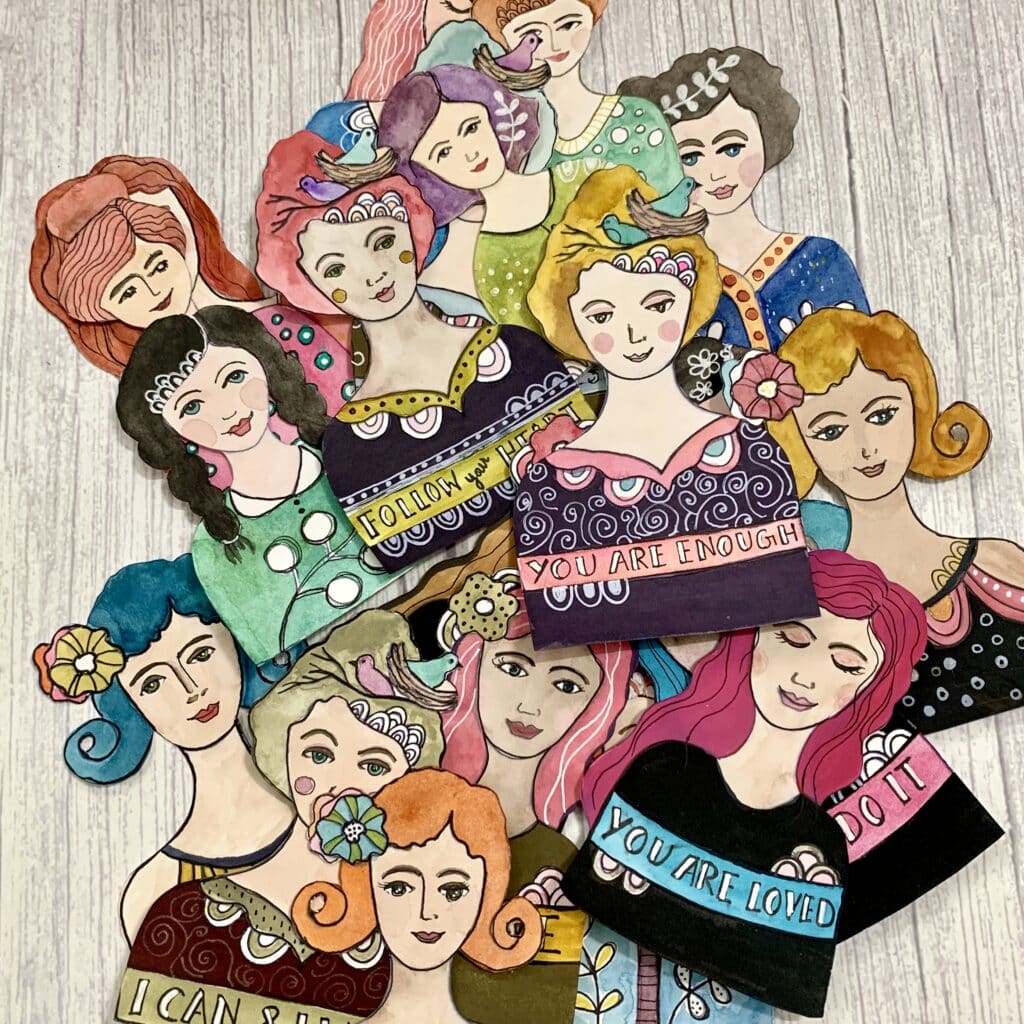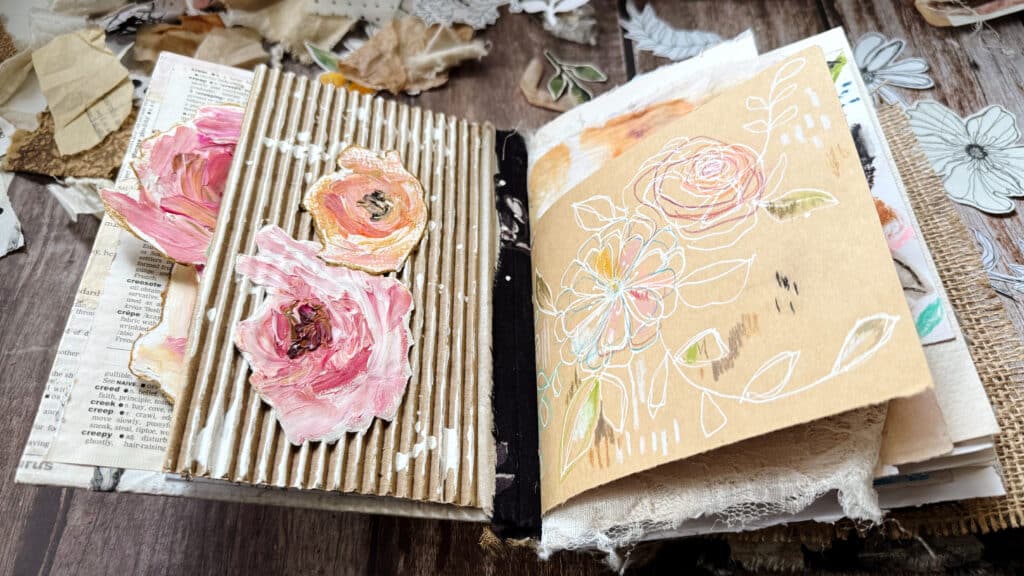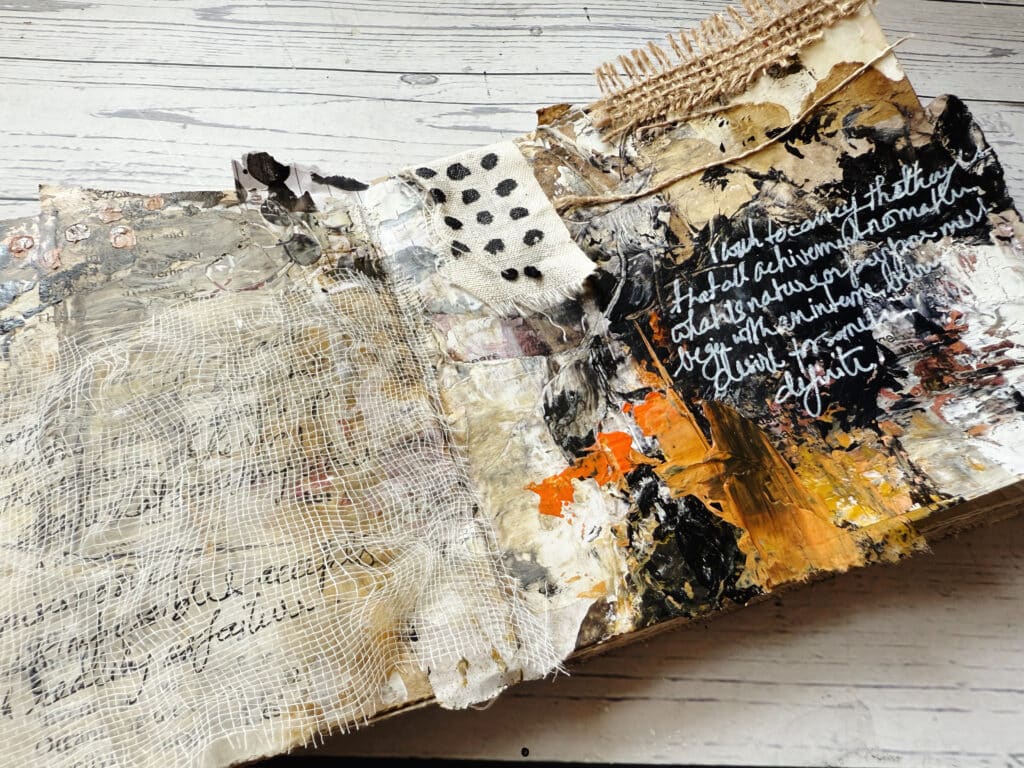🎟️ 100% FREE
I’m thrilled to announce that I’ll be a guest teacher at the upcoming MakeCreate Express free creative retreat weekend on July 12–13, 2025. This online event features 26 artists from around the world, each offering a unique mini-workshop designed to spark your creativity.
What you’ll experience this weekend:
26 mini-workshops led by international guest teachers
Techniques spanning collage layering, mark-making, mixed-media magic, and mindful art practices
Live demos, guided prompts, and Q&A time to get your questions answered in real time
A supportive creative community cheering you on
What you’ll learn in my lesson
During this retreat, I’ll be teaching a session on Mini Abstract Paintings, guiding you through a layered mixed-media process that embraces spontaneity and self-expression.
It’s a perfect opportunity to explore new techniques and connect with a vibrant creative community—all from the comfort of your home.
Step-by-Step: Creating Your Mini Abstract Masterpieces
MATERIALS YOU NEED
1. Surface Options
- A3 watercolor paper (300gsm or thicker)
- A3 sketchbook paper
- A3 Mixed media paper
2. Paints & Mediums
- Acrylic paints (various colors)
- Basic Watercolor set
- White gesso (for priming and texture)
- Matte medium (for layering)
3. Brushes & Tools
- Flat and round brushes (small to medium sizes)
- Palette knife (for texture and scraping)
- Sponge or rag (for blending)
4. Mark-Making Supplies
- Soft pastels or watercolor crayons
- Oil pastels or colored pencils
- Fine liner or ink pen (for details)
- Graphite or charcoal pencil (for sketching)
5. Additional Supplies
- Palette for mixing colors
- Water container and paper towels
- Masking tape (for clean edges)
- Hairdryer (for faster drying)
Mixed Media Artist Resource Library
Free printables, collage papers, creative prompts & how-to guides
I’ve put together a free resource library designed just for you, packed with everything you need to fuel your creativity. It’s my way of giving back to the mixed media community with resources to inspire your next project. Click here to join.
Step 1: The Foundation - Journaling and Collage
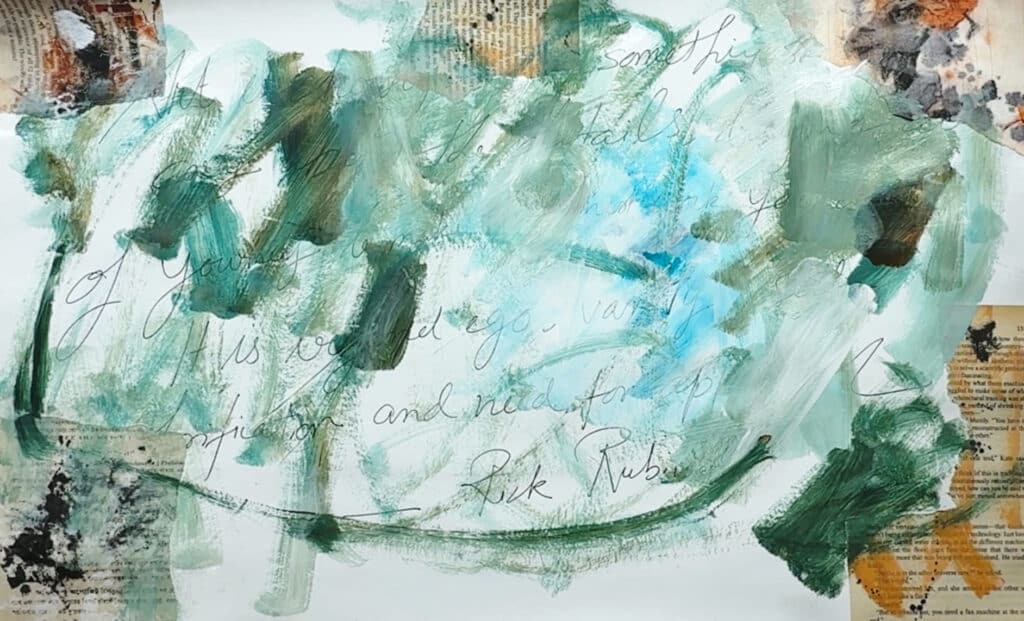
Begin with a blank sheet of A3 mixed media or watercolor paper (i used a 21×15 inch drawing paper). This will be your canvas for exploration. Start by journaling directly onto the paper—write down your thoughts, feelings, or even a favorite quote. For this project, I used a beautiful quote by Rick Rubin to ground my piece. Let your words flow across the page; they don’t have to be legible, just honest.
Next, add your first layer of texture with collage papers. For this project, I used a curated selection of papers that will be available as a free downloadable resource. Tear, layer, and glue them down intuitively—this is about building visual interest.
Next, add texture and depth by collaging torn pieces of paper. You can use vintage book pages, handmade papers, or scraps you already have. Glue them down intuitively—this is about creating a base filled with movement and texture.
Step 2: Mark-Making and Layering with Acrylics
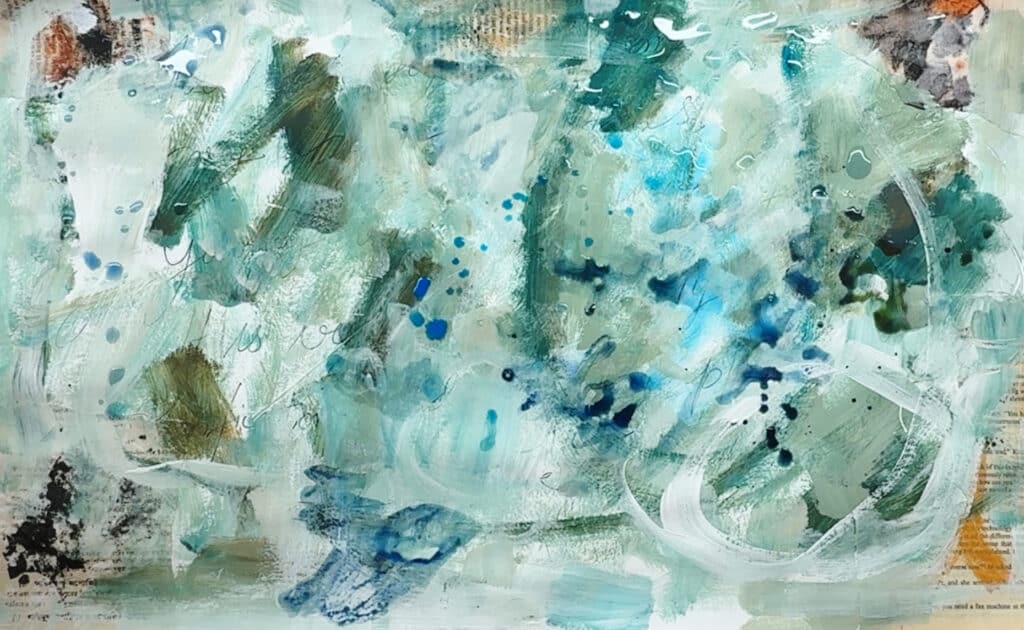
Once the collage is dry, bring in acrylic paints to add bold strokes and marks.
For my palette, I chose phthalo turquoise, burnt sienna, black, and white. Use a dry brush to add spontaneous strokes and marks across the page.
Focus on contrast and movement but avoid overthinking—it’s all about energy at this stage.
Step 3: Watercolor and Coffee Magic
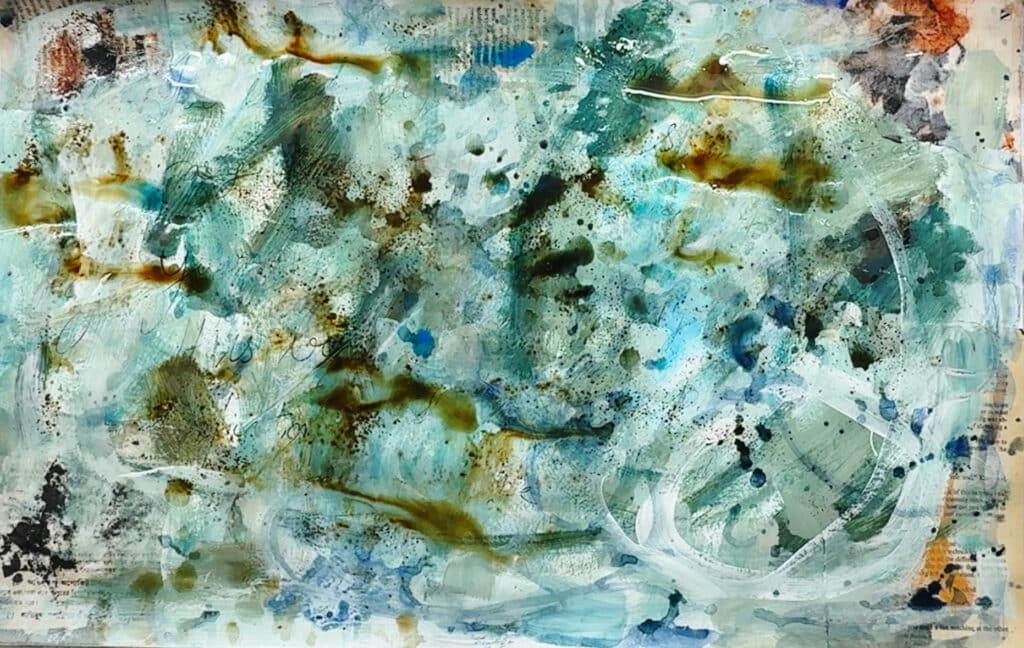
Watercolors are a beautiful way to soften the acrylic layer while introducing organic transitions. Apply watercolor across the page, letting it seep into the textures you’ve created.
Then, for an organic touch, I sprinkled coffee over the wet paint, allowing it to create unpredictable textures as it dried. This adds warmth and depth to the piece.
Step 4: Adding Complexity with Pastels and Pencils
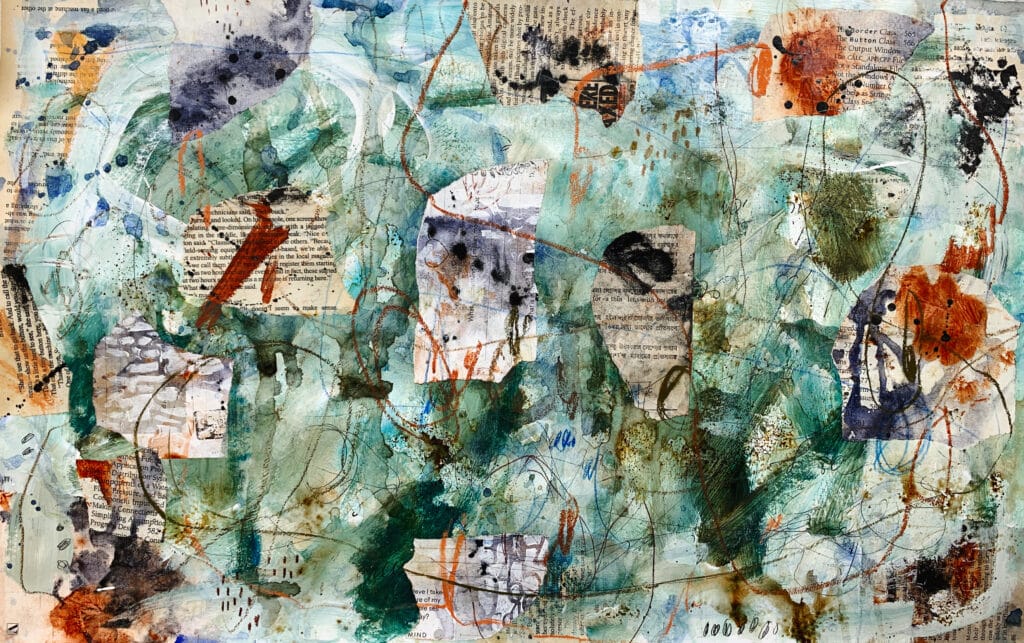
After the initial layer dries, return to the piece with soft pastels and pencils. Make marks, shapes, or lines wherever your instincts guide you. This step is all about embracing the chaos and adding your unique touch to the composition.
Step 5: Cutting the Chaos with Gesso and Light Tones

Now, it’s time to refine the composition. Using a silicone tool, I applied gesso and light acrylic shades to tone down chaotic areas. This step is about balancing boldness with softness. Think of it as finding clarity amidst the mess.
To add a final touch of contrast, I dipped a branch into India ink and made organic, gestural black marks across the surface. These create a dynamic focal point while maintaining the abstract spirit.
Step 6: Creating Mini Masterpieces
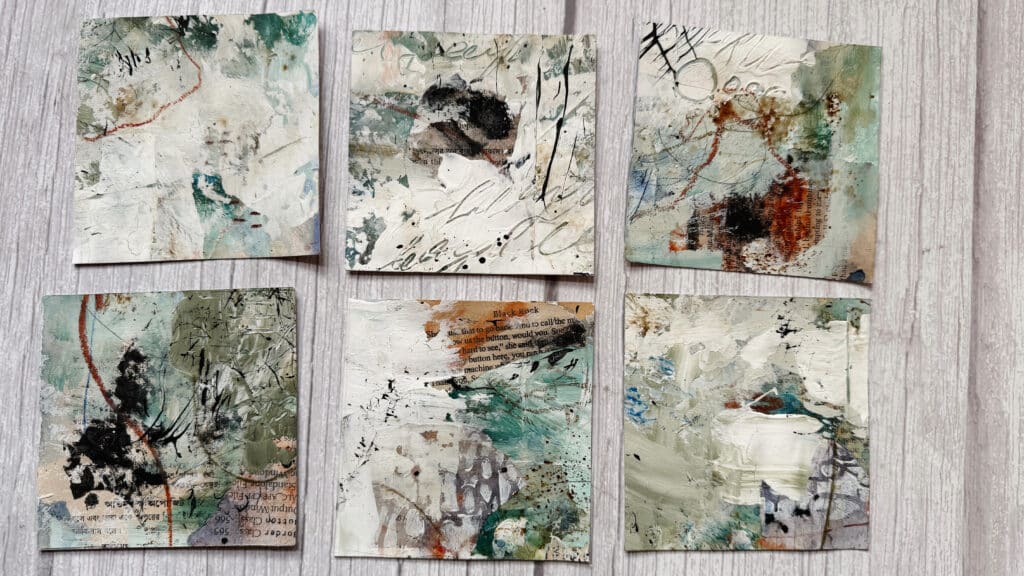
Once your layered abstract is complete and fully dry, it’s time to cut it into smaller pieces. I chose to create 4×4-inch mini artworks and tags, each one a unique expression of the larger piece. These can be used as standalone artworks, journal inserts, or even thoughtful gifts.
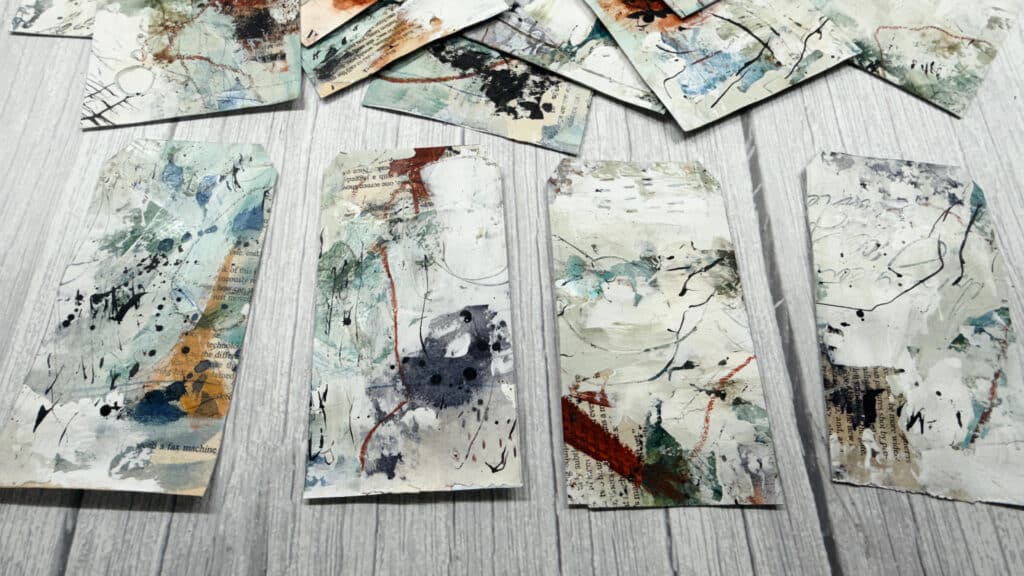
This project is a beautiful reminder that creativity isn’t always about precision or control. It’s about exploration, layering, and finding joy in the unexpected. By breaking down a larger chaotic piece into smaller, balanced works, you’ll discover the beauty of imperfection and the power of transformation.
I hope this inspires you to try your hand at creating layered abstracts. Let yourself play, experiment, and see where the process takes you. If you create something using this method, I’d love to see your work—feel free to share your creations with me!
🌟 Continue Your Creative Journey with MakeCreate Express 2025–26
After our free weekend retreat, the MakeCreate Express year-long program kicks off—an immersive journey featuring two in-depth classes from each teacher.
Here’s what you get when you enroll in the full program:
“Mini Abstract Paintings” Deep Dive (that’s me!)
“The Magic Within” Workshop – Explore intuitive journaling and collage as a form of self-care
“Textured Landscapes” Workshop – Learn how to build depth and atmosphere using mixed media
52 inspiring classes from artists specializing in collage, encaustic, watercolor, sketch journaling, intuitive mark-making, and more to keep you engaged year-long
A private online community for sharing progress, asking questions, and staying motivated.
✨ Ready to Dive In?
Step 1: Watch my mini-trailer on YouTube to get inspired.
Step 2: Sign up for the free MakeCreate Express weekend (July 12–13, 2025).
Step 3: Gather your supplies and join me live for Mini Abstract Paintings—it’s going to be a blast!
Step 4 (optional): If you fall in love with the process (and I know you will), secure your spot in the year-long program to keep the creativity flowing all year long.
I can’t wait to see what you create—tag me on social media with #MiniAbstractPaintings so I can cheer you on. See you in the workshop!

